You know how complicated it is when you decide to diet. There are a lot of alternatives in the diet. Do you choose low-carb? Low-fat? Paleo? South Beach? The Mediterranean? There are more dietary alternatives than options when requesting takeout.
Finding which one is more reliable is the most difficult. Both low-fat diets and high-fat diets can not be true at the same time. A person who determined to diet needs a guide with entirely proven data. That’s why this summary has been written to be a reliable source for you.
Thus, you will understand that you don’t need a fast diet, an intense advance, or unrealistic portion control. It is necessary to stop eating junk foods that make us obese and go back to a “normal” human meal that we’ve been used to eating for thousands of years. The diet that our ancestors were used to before refined, diabetic, fatty foods become normal just 50 years ago.

Chapter 1 – Obesity is a normal reaction of the body due to the diet of high-calorie and refined foods.
Let’s mention an ugly truth. A hundred years ago, only one in 30 people were fat. Today? It’s one in three. to be honest, 71 percent of adults living in the United States are fat and 40 percent are obese. Overweight is considered the new normal.
What was causing this? Why are so many people gaining weight? The best way to understand this is to take a journey in time. Back then.
The existence of humanity was to eat.
According to what has been told in history, we have always lived in survival mode. The food was insufficient and was not always available. If you found food, you would eat it immediately.
And you would particularly want to find foods rich in calories. If our ancestors gathered a total of 250 calories of food per hour, they had to look up for food for almost ten hours for their daily calorie needs. But if they could find a total of 500 calories of food in an hour, they could have reduced their daily foraging routines to fewer hours. As a result, they gained an extra five hours to draw paintings on the cave walls.
Thus, humans made an evolutionary choice to eat and store foods whenever possible. And they developed a stereotyped understanding of calorie-dense foods.
Today, we still have this stereotyped preference for calorie-rich foods. Which foods do you like the most? Lettuce? Cucumber? Or high-calorie, fatty, sweet, high-carb food? Studies on young children show that they make their choices for foods that are high in calories. They will prefer banana to berries, and even potatoes will be more desirable than a sweet peach. Their taste may not be as good as other fruits but their calories are higher.
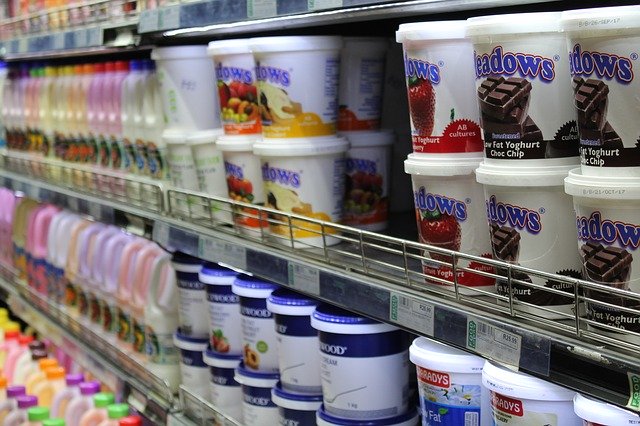
But high-calorie foods, which are a must in the past thousand years, are a problem today. Our biology is adjusted to famine, but now we are in abundance. Bananas with a weight of 400 calories are no longer at the top of the high-calorie food scale. Processed foods such as chocolate, cheese, Bacon can have thousands of calories per pound. we can clearly understand the difference between banana and lettuce, however, we try to explain the difference at the upper end of the scale. It is not surprising that grilled cheese like chocolate cookies was not on the menu for our ancestors.
The fact is that weight gain is quite usual and expected. When people with an overweight body are faced with high-calorie foods, they instinctively do what nature has taught them. Today we are facing more calories than ever before.
Chapter 2 – The modern food industry produces more high-calorie foods than we need and offers them to us.
Obesity rates have entered an acceleration in the last century. But this increased momentum become unstable and rapid. A strange situation emerged in the 1970s. Obesity rates have instantly increased not only in the United States of America but also in prosperous countries in the world. Why?
The food and beverage industry wants us to think that this increase in obesity rates is due to less movement. PepsiCo’s CEO once said, “if all consumers go to the gym, it will not be possible to gain weight.” But this was just a wrong expression. It is clearly stated in a detailed review of the scientific literature. Studies have accurately shown that eating foods rich in calories is a much greater problem for obesity than lack of exercise.
So what happened in the 1970s?
In the 1960s, people used to cook most of the foods at home. However, since the 1970s, technological developments in the production, conservation, and packaging of foods have allowed large enterprises to easily prepare and distribute processed foods.
Let’s take the Twinkie as an example. Of course, if you want, you can bake a delicious, cream-filled cake at home, but you probably won’t always bother to cook cakes at home. But with the revolution of production in the 1970s, it meant that you could buy a Twinkie for less than a dollar almost anywhere and anytime.
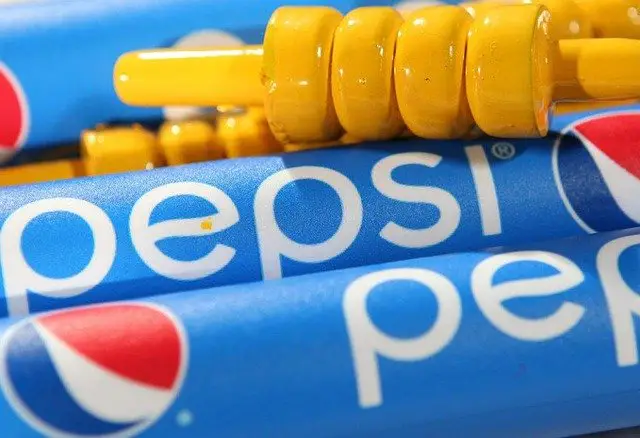
In short, since the 1970s, we’ve been eating at CRAP-filled tables, which are calorie-rich and processed foods. Put simply, food companies produce foods that contain high-calories.we are increasingly getting fat by consuming these high-calorie foods produced. In the early 2000s, the United States produced 3,900 calories per day for every people.
The fact that healthy products such as canned beans and tomato paste are not very lucrative for large food companies is the basis of the problem. On the contrary, improved refined foods such as potato chips are more rewarding. Frito-Lay, an affiliate of PepsiCo, claims that its products can correspond to about 1 percent of a supermarket’s total sales and they may correspond to 10 percent of its profits. Today, companies producing processed high-calorie foods earn more than $2 trillion a year.
Producers of CRAP are successful in suggesting that there are other complex causes of the rapid spread of obesity.
But it is not difficult to solve. The reason is our food. Now we get an extra 500 calories every day. And on average, we gained weight by consuming extra 500 calories of food daily. Let’s how we can tackle this irritating weight gain problem.
Chapter 3 – Consuming fiber-rich foods is the most important diet for weight loss.
When you research books for weight loss on Amazon, you will encounter 30,000 different diet books. Diet for weight loss is an industry worth $50 billion. But the truth is that the diet industry provides fad diets and fast bodybuilding suggestions instead of long-lasting results.
For example, Weight Watchers claims that many people lost hundreds of pounds thank its program. However, according to real scientific tests, it was observed that only six pounds were lost on average with the Weight Watching program applied for two years. A truly efficient weight loss program should have scientifically proven results.
Fiber is a tasteless type of food. It has few calories and cannot be easily digested. It only increases the size of the poop. But it has an incredible effect on weight reduction.
In fact, as a result of all studies, it was noted that people who ate only 14 grams of extra fiber per day lost an extra 1,9 pounds in four months.
Why did this happen? First of all, the overall calorie intake is reduced as more fiber is consumed instead of high-calorie foods. Think of a bottle of apple juice. In fact, it is an apple juice with removed apple fibers. You can drink a bottle of apple juice in seconds, and you probably won’t even feel bloating. On the contrary, instead of drinking apple juice, you feel quite full when you eat five cups of apple slices that have equal calories with the juice.

Secondly, fiber reduces the number of calories you take in by absorbing it. Suppose there are two groups of people. Feed the people in the first group with buttered white bread and the others in the second group with buttered whole-wheat bread. People who eat whole wheat bread will defecate more fat-coming from the butter- than those who eat white bread. This is because the fiber of whole wheat bread captures some butter calories. Studies showing the rate of fat in fecal- of course, someone had to do it- has demonstrated this for almost 50 years.
Fiber is like a calorie reducer. If you eat a high-fiber diet, you will lose weight because not all calories can enter your system due to fiber. If you follow the recommended fiber intake, you will be missing 100 calories per day. The required fiber consumption is sufficient to prevent gradual, annual weight gain, which causes us to gain too much weight in the middle age.
What are the most common sources of fiber? Root vegetables contain fiber, but real fiber-rich foods are legumes and whole grains such as beans, chickpeas, and lentils.
Chapter 4 – A low glycemic load diet could be a means to lose weight.
Why are the effects of white bread and pasta, which have the same contents, different on health?
Well, bread raising blood sugar is two times larger than the increase caused by pasta. Why? Because there are small bubbles in the bread. Thanks to these bubbles, our digestive system reaches the starch contained in bread easier and faster and transforms it into sugar more quickly. The digestive system is not fast enough to split the starch in pasta because the pasta is a bit more robust. You can make sure this for yourself by chewing a piece of bread in your mouth. continue to chew until you start to have a sweet taste. It won’t take a long time. Here is the taste of the digested starch! Now do the same chewing with cooked pasta. After a few hours, let me know when you finally have a sweet taste in your mouth.
But why is it important for carbohydrates to be digested so quickly and turn into sugar? A high glycemic load-or sugar increase- has a huge unfavorable effect on your appetite and fat burning rate.
This is largely because they tend to stimulate the desire to eat again shortly after consuming foods with a high glycemic load.
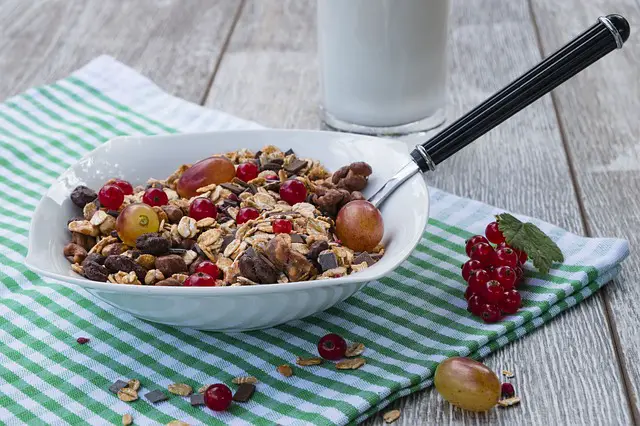
In an experiment, a group of children was given a bowl of breakfast cereal with a high glycemic load such as Cornflakes or Coco Pops, and other children in the second group ate a bowl of oatmeal with a low glycemic load. These two breakfasts had the same calories but different glycemic loads. Children who ate breakfast cereal with a high glycemic load then preferred a larger buffet lunch than those who had breakfast with oatmeal which is a low glycemic load. Therefore, not consuming high glycemic foods is a priority to avoid more desire for eating and overeating later in the day.
A low glycemic diet doesn’t just help regulate appetite. Have you had trouble losing weight with your diet for several months? One reason for this is that when your body detects that it is losing fat, it slows down its metabolic rate. This is our calorie-burning rate from available ones.
Eating low glycemic foods prevents this metabolic slowdown. According to a study, it was found that the metabolism of those who fed a high-glycemic diet slowed 80 calories more than those who had a low-glycemic diet. This is the number of calories you burned by walking a mile.
So which foods should you prefer? Well-refined carbohydrates such as breakfast cereals, white rice, potatoes, and white bread are famous high glycemic foods. Stop eating foods with a high glycemic load by eating legumes, fruits, and non-starchy vegetables.
Chapter 5 – A real low-fat diet program is essential for weight loss, but this diet has less fat than you think.
Today it is relatively accepted by many people to apply a fat-based diet as carbs are blamed for the obesity problem. According to the theory, years of government recommendation to reduce fat intake actually leads to more sugary carbohydrate consumption. This carbohydrate consumption results in the obesity problem.
This is not entirely true. Of course, sugar will be charged for obesity. But fat should also be blamed for weight gain.
After all, the issue with fat is that it is already the main factor of fattening. Since it is already fat, it is stored in our body more easily as body fat. Of course, carbohydrates can also be turned into fat in our bodies. But it takes a while. Your body spends 23 calories to accumulate a hundred calories of carbs as fat in your waist or thighs. A quarter of energy is used only to store carbohydrates. If you want to burn stored fat in your body, you should definitely follow a low-fat diet.
So why don’t some people trust low-fat diets?
As a reason, unrealistic thoughts arise in people’s minds about the low-fat diet. While we think that we buy low-fat foods, we always get high-fat foods.

The so-called lean ground beef contains almost 30 percent fat. This has twice the fat substance of real lean meat that our ancestors ate. Calories from the flesh of wild game animals such as elk or deer contain 15 percent less fat. And, of course, our ancestors knew nothing about either butter or fat.
For a thousand years, we’ve taken about 10 percent of our total calories from fat. So getting below this level should be our standard for a real low-fat diet. And when you test such a diet, the results proved to be quite impressive. Dr.Dean Ornish conducted a study on people who reduced their fat intake to 6 percent with a plant-based diet. After a year, he observed that the participants lost an average of 24 pounds.
So how can we reduce fat intake? İt is important to cut all foods high in fat, except lean meat. But an important step is to reduce the fat added to the meals. If you want to cook your favorite dishes without oil, get a tip from the author. He uses wine, sherry, vinegar or a little broth for sauteing and frying. For the first time, put some liquid and continue adding.
Chapter 6 – Complete reduction of added sugar is essential for losing weight.
The average American is overweight by taking 350-500 more calories a day. The average American consumes 350-500 calories more of sugar per day. Evidence is obvious. Reducing the consumption of sugar results in weight loss. On the contrary, calorie intake increase with the consumption of excess sugar, and the result is weight gain.
This is an important problem because we consume more sugar than ever. Much more. During the War of Independence, an average American consumed 4 pounds of sugar a year. Today? She eats more than 50 pounds of sugar. This means consuming 17 teaspoons of added sugar every day.
We don’t really need that much sugar. U.S. Dietary Guidelines currently suggest that calories from added sugars should not be more than 10 percent. This is a limit set by the Sugar Association as “extremely low”. But this is still a bit high! There is no need for added sugar in the diet.
One of the reasons why sugar is detrimental is that it makes us want to eat more. The food industry now emphasizes that a calorie is a calorie. The damage caused by excess calories consumed through Coca Cola is not different from the harm caused by excess calories consumed through carrots.

And if you consume both of them in controlled quantities there is no problem. But that doesn’t really work like that. In studies, children who are offered high sugar or low sugar breakfast cereals will choose the breakfast option with 77 percent more sugar. Your child has a limit to eating Cheerios but he will always want to eat more when you give him sugar-filled Froot Loops.
The consumption of sugars added to food should be stopped. You should not take more than 5 percent of the calories you need to take daily from the added sugar. In other words, even one drink causes you to exceed the sugar limit.
It is good news to be able to get rid of the added sugar habit. Studies have found that people who cut added-sugar consumption for two weeks stop their desire to eat dessert after a week. At the end of the period, they said that foods made with added sugar were very sweet now. A life without consuming added-sugar may be a bit excessive. But the only time you have to cope with it is these two weeks. If you succeed in this, the sugar problem may be solved forever.
Chapter 7 – It is not enough to eat small portions to lose weight; it is also necessary to reduce calorie intensity.
How can you reduce the calories from a plate of pasta without reducing the amount you eat? Of course, you can achieve this by reducing the calorie intensity in pasta sauce. If you prefer tomatoes and broccoli instead of cream and cheese, you can reduce your calorie intake by a third.
In order to reach a healthy weight, it is necessary to eat less intensely, as well as to eat.
It has been firmly confirmed by researchers that high-calorie-intensive diets result in weight gain. Let’s find out why. We are used to eating the same amount of food a day. And our stomach reserves more space than the calorie intake they assume. The stretch receptors in the stomach wall transmit to your brain that you are pretty full.
If you fill your stomach with ice cream in one sitting, you get daily calories you need at one meal. But your stomach and brain will want to eat other foods throughout the day. If you want to get the same calories from strawberries, you need to consume 44 cups of strawberries or fill your stomach with strawberries 11 times. But it is clear that you can not do this in a single day.
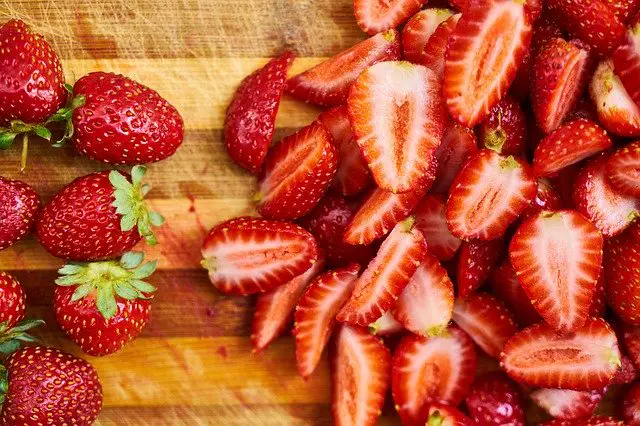
So how can the calorie density in foods be reduced? The easiest solution is to remove added fats and sugars from our lives and instead include fruits and non-starchy vegetables in our diets. Fruits and vegetables are often filled with air or water. So they have low-calorie density. Some vegetables such as celery and zucchini contain up to 95 percent water. Also, fruits such as apples and pears are mostly made up of water and air.
You can conclude with this example. In a study in Brazil, some participants were given three apples in addition to their regular diet each day. Others took three oatmeal cookies with the same caloric value as apples. Participants who ate apple lost weight. They had to eat a little less because fruits with low-calorie density filled participants’ stomachs. The other participants given the oatmeal cookies had plenty of stomach space for other foods because they could not fill their stomachs. Therefore they could not reduce their calorie intake and lose weight.
You need to be aware of the calorie density of the foods you eat. Try to eat foods such as nuts, oil, cheese in smaller amounts. There are a lot of calories in a piece of these foods. Instead, you can get fresh fruits and vegetables with reliable knowledge that they will never put you on weight.
Chapter 8 – Legumes are undeniable foods of a healthy life.
Why do Hispanic Americans live longer than other Americans, although they have worse socioeconomic conditions and low health insurance?
Hispanics have a 24 percent lower risk of premature death. They have less cancer and heart disease. How do they get this long life?
Beans. Or more broadly, legumes. According to the theory of public health researchers, it is at least considered so.
Legumes-beans, chickpeas, lentils, and peas- are included in both the vegetable group and the protein group. Legumes also contain substances such as protein, iron, and zinc found in an animal-protein source like meat. But legumes are also healthy food sources containing fiber and potassium found in vegetables.
Legumes are also quite satisfying. In a study, some participants were given one cup of chickpeas and others one cup of white bread with butter. A few hours later, at the next meal, participants who ate chickpeas consumed 200 calories less. And these results are the same even when legumes are compared to protein-rich meats. Researchers observed that when they made a similar experiment with patties made from legumes and patties made from meat, legume patties kept the appetite safe compared to their animal protein rivals.
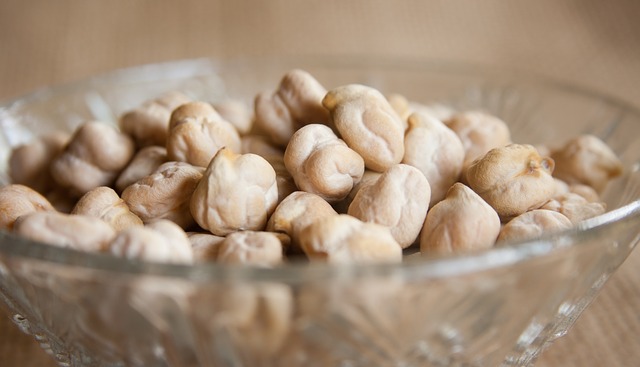
Therefore, experiments showed that legume eaters lose weight faster than people who add whole grains to their diet. According to another study, people who added legumes to their diets noticed that within three months, their waist was thinning an inch.
So why is the proportion of Americans who add legumes to their diets only 8 percent? Well, many Americans don’t know how to prepare and cook legumes. Do not delay your ideas for soaking chickpeas overnight and boiling beans for hours. You can easily add legumes to your diet with pre-cooked, ready-to-eat chickpeas or beans. Or just boil a cup of red lentil with three glasses of water for 20 minutes, drain, cool, add lemon juice and spices. That’s it! A healthy, delicious and satisfying soup. What’s not to like about this?
Chapter 9 – A plant-based diet is an ideal program that has proven weight loss.
There are many different types of diets. Most of them are fashionable diets aiming to make lose weight quickly. Some can make you lose weight but it’s still unhealthy.
Fad low-carb diets like Atkins can lead to weight loss. According to 48 experimental analyses from various diets, people who follow the low-carb diet programs lost about 16 pounds in a year. It is not difficult to understand that low-carb diets work. The four factors that cause high-calorie intake in America are refined grains, added fats, meat and added sugar. If you remove refined grains and sugar from your diet, you will most likely lose weight.
Of course, this is not a very good idea. According to studies, it has been found that low-carb diets damage your arteries and reduce blood flow to the heart. Mortality rates are high due to heart disease. Dieting is unnecessary if we will be a lighter corpse in a coffin.
Why remove only two of the four factors that cause more calorie intake, while you may also give up some of the meat and added-fat?
Instead of applying fad diets, you can follow a relatively easy plant-based diet.
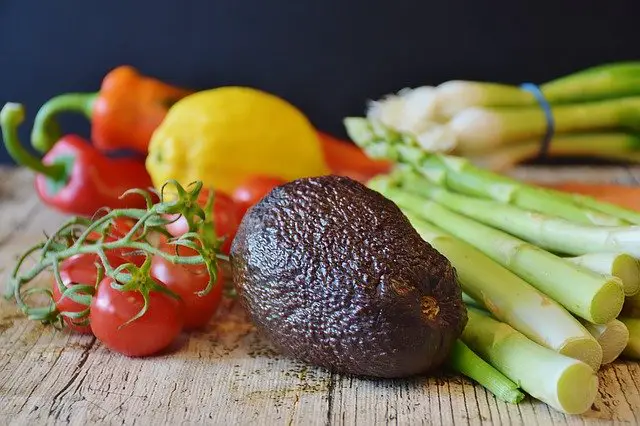
Let’s consider what a plant-based diet is. It doesn’t always have to be a vegetarian or vegan diet. It is a diet that shrinks ingestion of meat, eggs, and dairy products and does not include CRAP foods which are rich in calorie and processed. Unlimited vegetables, fruits, legumes, whole grains, spices, and herbs are included in this diet. There is no limit to how much you eat, which is the best feature of a plant-based diet. There is no longer any need to starve yourself, check portions or count calories. If you follow a plant-based diet, you can achieve lasting weight control. Maybe this is not surprising. Our ancestors have followed a plant-based diet for millions of years. Before we found out how to grind and process grains, boil the sugar cane, and produce CRAP foods, we were feeding on plants.
Our digestive system is designed for this type of diet. We should return to our roots, our beans, and leaves.
The hardest part of the struggle is to change what food we used to eat. But this is not something that cannot be changed. In the next chapters, we will cover some tweaks and tips that can be useful for your weight loss program.
Chapter 10 – Facilitate weight loss with responsibility and front-loading.
Which is the best diet? The answer might be a little surprising.
The most efficient diet program in the history of medicine is a voluntary self-motivational group that originates in a small town in Pennsylvania. The Trevose Behavior Modification Program is like Weight Watchers, including weekly weighings and support of the group. However, participants lost an average of 39 pounds in two years, compared to only 6 pounds of Weight Watchers.
So how did this non-profit volunteer group succeed while this multimillion-dollar company, Weight Watchers, failed? This includes responsibility. In the Trevose program, if members cannot reach their weight loss goals, they are expelled from the group. They have no chance to come back after being fired. This practice is a bit harsh but it shows the importance of responsibility and follow-up. According to trials, group therapy gives better results than diet alone, and health coaches make people feel responsible for losing weight.
But being responsible for yourself is equally important. Researchers assume self-control as the main attitude for weight loss. According to studies, 79 percent of participants who lost 70 kilos measured their own weight at least once a weak. For this reason, people following a diet are advised to weigh themselves regularly. One study has observed that weighing twice before and after sleep yielded the best results.

Changing your time to eat is another important tip. It is said that breakfast is usually the most important meal of the day.
This is true if you are trying to lose weight. Studies have repeatedly found that consuming excess calories at the first meal results in weight loss. Israeli researchers found that people who took 700 calories for breakfast, 500 for lunch, and only 200 calories in the evening lost two times more weight than those who took more calories at dinner. Research shows that even changing your main meal from dinner to lunch will lead to weight loss.
How do we explain this? First of all, we lose more calories in the morning because of something called diet-based thermogenesis. This means the energy our body needs to burn off calories. Our body uses more calories to digest breakfast and as a result, fewer calories accumulate as fat.
So pay attention not only to what you eat but also when you eat it.
Chapter 11 – Drink lots of water and have a sleep of good quality to speed up your weight loss.
National research emphasizes that drinking plenty of water often results in weight loss. In addition to this, consuming too much water is one of the practices related to failed weight loss attempts.
Is this method useful or harmful?
According to many studies examining the relationship between water consumption and weight loss, increased hydration is beneficial for weight loss. There no direct reason for this. People who drink more water consume less sugary beverages. If children and adolescents in the United States consume more water instead of sugary drinks, they can reduce their calorie rate by an average of 235 calories per day.
But even if you reduce your consumption of sugary drinks, hydration still depends on improved weight control. This is the result of important work at Harvard. These great studies have been following the diets and health of more than a hundred thousand people for decades. These great studies have been following the diets and health of more than a hundred thousand people for years. And it can be said that people who drink a lot of water burn fat faster and produce less the angiotensin enzyme which provides fat accumulation.
You can control your hydration by looking at the color of your urine. The light yellow- the color of straw- is the color we need to see.

Another important factor to lose weight is to get a good night of sleep.
Sleep is important because we tend to eat more when we are tired. According to the experiments, it was observed that participants who slept for a few hours at night consumed an average of 700 calories more food per day than a control group. Also, when we are tired, we make mistakes by eating a donut or burger for faster sugar and fat intake. Fortunately, five or seven hours of night sleep has proven to reduce appetite for sugary and salty foods in just a few weeks. However, like hydration, good sleep is not just about having better eating patterns. It can also directly lead to weight loss.
According to experiments, people who get better sleep tend to lose weight and the majority of the weight is reduced from fat. In contrast, people who get less sleep also lose weight, but they are prone to reduce lean body mass. This is not the kind of weight loss we want.
Therefore, adopt a good night of sleep right next to a plant-based diet. If you have a short nap, you will see that this will be your loss.
How Not to Diet: The Groundbreaking Science of Healthy, Permanent Weight Loss by Michael Greger Book Review
The production of refined CRAP foods makes many people consume more calories and gain a lot of weight. But there is a reliable, proven and healthy way to both lose weight and maintain your ideal weight. This is a plant-based diet that is low in fat, sugar, calorie-dense foods and rich in whole grains, legumes, fruits, and vegetables. It is simply everything our body needs.
Eat fruits, salads, and vegetables which contain plenty of water at the beginning of the meal.
You should start each diet with an apple or salad with lots of green leaves, tomatoes, cucumber, and celery. Research has shown that when people consume low-calorie foods at the beginning of a meal, they eat less from the main and get fewer calories. This is intuitive but true: adding a low-calorie serving to your diet can reduce your calories.
